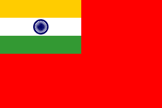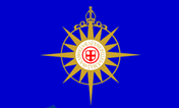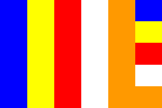![[reconstruction of Cartagena flag]](../images/v/vxt-d2663.gif)
![[reconstruction of flag of Communist Party of Spain]](../images/v/vxt-d2664.gif)
Realm Banner, Germany 1924 1933 (fotw); Flag of the League of Active Democrats, Germany (Tomislav Todorovic)
![[reconstruction of Cartagena flag]](../images/v/vxt-d388.gif)
![[reconstruction of flag of Communist Party of Spain]](../images/v/vxt-d1932.gif)
![[reconstruction of Naval Ensign, England]](../images/v/vxt-d2229.gif)
A Reconstruction of the 1812 Flag of Cartagena State, Colombia (fotw);
Reconstruction of the Flag of the Communist Party of Spain c1980 (Tomislav Todorovic),
Reconstruction of a Naval Ensign, England c1620 (fotw)
Please note that this term is sometimes used to exclude a square – that is a figure with proportions of 1:1 - especially when different ratios are being compared – see ‘proportions’.

Gonfalon/Ceremonial Flag of Buje, Croatia (fotw)
![[banner of order of knights of Christ]](../images/v/vxt-d2700.gif)
Putative Banner of the Order (fotw)
Please note that the above is correctly described in heraldic terms as a cross pattιe Gules surmounted by a cross-couped Argent.
![[recumbent]](../images/v/vxt-d2959.gif)
![[recumbent]](../images/v/vxt-d2959a.gif)
![[recumbent]](../images/v/vxt-d2960.gif)
![[recumbent]](../images/v/vxt-d2960a.gif)
![[recumbent]](../images/v/vxt-d2961.gif)
![[recumbent]](../images/v/vxt-d2961a.gif)
Flag and Arms of Espite, Portugal (fotw & ICH); Flag and Arms of Santiago, Portugal (fotw & ICH); Flag and Arms of
Cabeηa Gorda, Poetugal (fotw & ICH)
![[British Red Ensign]](../images/v/vxt-d1272.gif)
Civil Ensign, UK (fotw)
2) In English then British RN usage, now obsolete (and largely but not exclusively - dependent upon the rank of the admiral in command), the senior of three alternative ensigns carried (undefaced) by a warship until 1864 see blue ensign 2), common pendant, white ensign 2), yellow admiral and the notes below.
3) Generically, any canton flag (either plain or defaced) with a red field – particularly (but not exclusively) if flown at sea – a British-style ensign (see also ‘canton flag 1)’, ‘blue ensign 3)’, deface’ and white ensign 3)).
![[British Red Ensign]](../images/v/vxt-d270.gif)
![[British Red Ensign]](../images/v/vxt-d270a.gif)
![[British Red Ensign]](../images/v/vxt-d1272.gif)


From left: Red Ensigns, England c1625–1707; UK 1707–1801(CS); UK From 1801 UK From 1801 and Civil Ensign from 1864 (fotw);
Civil Ensign of Ghana; Civil Ensign of India (fotw)
Notes
a) Red ensigns were introduced into the English Royal Navy c1625,
they were
adopted (unofficially) by the merchant service shortly thereafter, and any such use
was made both official and compulsory in 1674.
b) With regard to 1), while most Warranted organizations
fly the blue, the red ensign is flown defaced by a few yacht
clubs, as a civil ensign by some dependent territories etc., and by some non-governmental bodies (see also ‘defaced’,
‘yacht ensign’ under ‘ensign’ and
‘warrant’).
c) Regarding 2), before 1864 an Admirals seniority was outwardly displayed by the
colour of his command flag and by the ensigns flown by any ships under his command - the junior colour
being blue, the next white and the senior red - however, in 1864 this colour system was abolished, and
thereafter all flag officers flew a white command flag from the appropriate masthead where applicable,
and all Royal Naval ships the white ensign (see also distinction of colour
and flag of command 1)).
d) Furthermore, and also before 1864 a red ensign was also worn by naval
vessels under the direct command of the Admiralty, rather than under that
of a local flag officer ( see also admiralty flag
1), common pendant and flag officer 2)) .
e) In addition, the ensigns worn within a fleet could be arbitrarily changed (if the tactical
situation required it) by order of the Flag Officer in overall command of that fleet irrespective of
the grade held by any of his subordinate admirals.
f) It should be further noted that the rank of admiral of the red squadron was introduced
(following the Battle of Trafalgar) in 1805, prior to this there was no grade between admiral of the white
and admiral of the fleet (who flew, and still flies, the union jack) see union jack 2)).
![[Royal Dart Yacht Club]](../images/v/vxt-d270c.gif)
![[Civil Ensign of Gibraltar]](../images/v/vxt-d2299.gif)
![[Trinity House ensign]](../images/v/vxt-d1777.gif)
Royal Dart Yacht Club, UK (fotw); Civil Ensign of
Gibraltar (fotw); Ensign of
Trinity House, UK (fotw)
Notes![[Danger flag, Flag Bravo and Soviet Union]](../images/v/vxt-d1701.gif)
From left: Danger Flag (CS); Flag Bravo (CS); National Flag of The Soviet Union 1924 – 1991 (fotw)
a) The International Code of Signals
stipulates flag bravo – a plain red swallow tail – should be flown when loading, discharging or
carrying a dangerous cargo (see also
‘international code of signals’ and
‘swallow tail(ed)’).
b) The first recorded use of such a flag (with political motives)
was when it was flown by some ships during the mutiny at the Nore in the Royal Navy of 1797
1797 (see ‘flag of defiance’ and its following note) and
thereafter during several revolutionary situations until becoming firmly associated with Socialism
during the Paris Commune of 1871. This red flag was the direct ancestor of the later Soviet and
other Communist flags - see 'red flag 3)' above.
![[regardant example]](../images/v/vxt-d1153.gif)
Flag of Wφlflinswil, Switzerland (fotw)
![[Regimental colour example]](../images/v/vxt-d1455.gif)
![[Regimental colour example]](../images/v/vxt-d2665.gif)
Regimental Colour, The South Gloucestershire Regiment, UK c1900 (Klaus-Michael Schneider);
Regimental Colour, 10th Infantry Regiment, Prussia c1750 (fotw)
![[regimental flag example]](../images/v/vxt-d1457.gif)
![[regimental flag example]](../images/v/vxt-d1458.gif)
Regimental/Camp Flags of The Light Dragoons and The Royal Irish Regiment, UK (CS &
Graham Bartram)
![[Regional emblem]](../images/v/vxt-d2790.gif)
Flag of Ferizli, Turkey (fotw)
![[registration flag example]](../images/v/vxt-d424.gif)
![[registration flag example]](../images/v/vxt-d509.gif)
![[matricular flag - Spain]](../images/v/vxt-d487.gif)
Registration Flag of Puerto Libertad, Mexico c1858 1888 (fotw);
A Sector of the Arrondissement of Brest, France (fotw); La Palmas de Gran Canaria, Spain
c1870 (fotw)
Please note, it has been suggested that this type of flag/pennant may have had wider European usage than is indicated above, however, no further information can be confirmed at the present time.
![[reconstruction of Cartagena flag]](../images/v/vxt-d2663.gif)
Realm Banner / Reichsbanner, Germany 1924 1933 (fotw)
![[regular cross - Savoy]](../images/v/vxt-d1905.gif)
Flag of Savoy, France (fotw)
![[Reichskriegsflagge]](../images/v/vxt-d1155.gif)
Reichskriegsflagge/War Flag of Germany 1938 1945 (fotw)
![[rejected design example]](../images/v/vxt-d2050.gif)
Rejected design for the National Flag of Canada, 1964 (fotw)
![[ecclesiastic banner]](../images/v/vxt-d2073.jpg)
(artfromthesoul.com)
![[Papal colours]](../images/v/vxt-d1459.gif)


![[Hindu dhvaja]](../images/v/vxt-d113.gif)
Papal Colours (CS);
Flag of the Anglican Communion (fotw); Standard Buddhist Flag (fotw), Dhvaja of the Hindus (CS)
Notes
a) A Roman Catholic church often flies either the flag of the Vatican City State
or a bicolour in the Papal colours of white and gold, an Islamic mosque usually displays one or more crescent vexilloids and a Jewish synagogue the Menorah or the Magen David
(see also ‘crescent’,
‘Magen David’,
‘Menorah’ and
‘vexilloid’).
b)
Religious flags in the US
are often displayed within the church building as well as outside, whereas in the UK Christian churches,
with the exception of those religious banners carried in procession (and laid up military colours), usually
(but not invariably) fly such flags outdoors.







![[Red Cross flag]](../images/v/vxt-d490a.gif)
![[Red Crescent flag]](../images/v/vxt-d490b.gif)
![[Red Diamond flag]](../images/v/vxt-d490c.gif)
![[reduced bend flag]](../images/v/vxt-d271.gif)
![[reduced bend sinister flag]](../images/v/vxt-d273.gif)
![[Regimental colours example]](../images/v/vxt-d1456.gif)